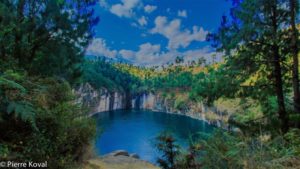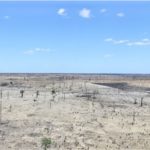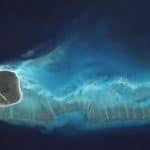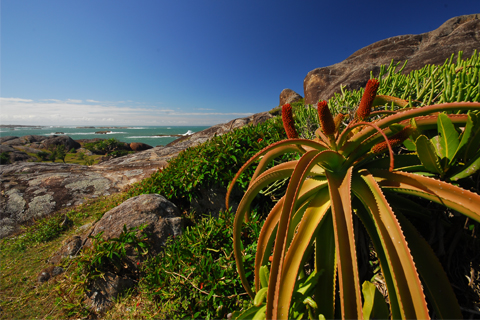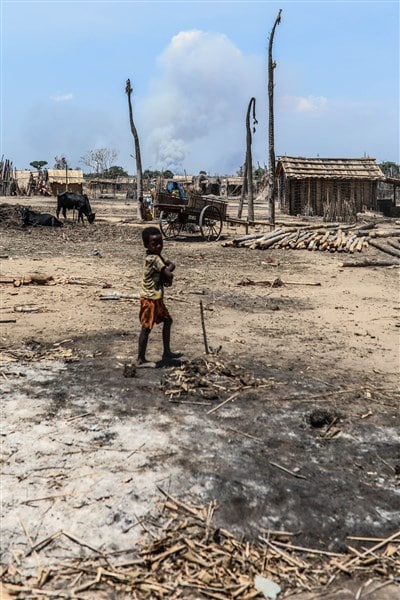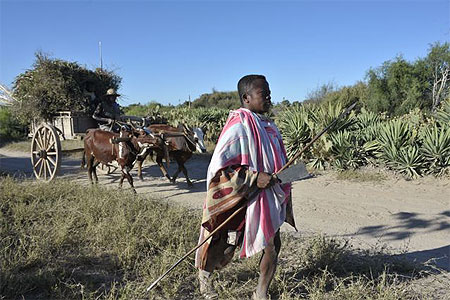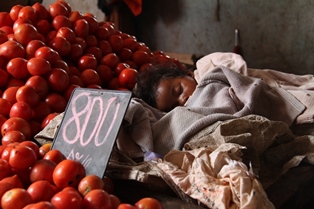Tribes in Madagascar-MERINA
The geographical distribution of the Merina
The Ankaratra Massif, visible from Antananarivo in all seasons, forms the central part of the north-south ridge of the island. The main ridge line runs at an altitude of more than 200 m for almost 100 km and culminates in Tsiafajavona ("where the fog never lifts") at 2,643 m above sea level.
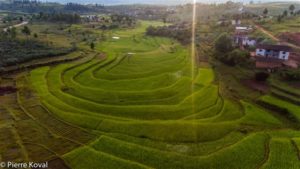
From the heights of Ankaratra the view leads to the capital in the north, to the Lake Itasy to the west, to the forest of Tsinjoarivo to the east, to the rice-growing basins of Sambaina and Vinaninony to the south, and to the peaks of the Malagasy highlands.
Hiking through the massif
Ankaratra offers diverse landscapes - tree ferns in the humid forests, pine forests, heaths, rare flowers like orchids, bare mountains, huge rocks - and very diverse hiking opportunities.
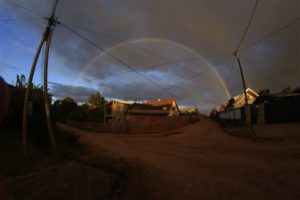
It leads over Faratsihothe highest city in Madagascar (1,792 m), over the Mahafompona Pass (2.386 m), from there you can reach Antsirabe via RN 43 and Sambaina or via Vinaninony and Ambano (45 km slope through the orchards) reach.
MANJAKATOMPO forestry and fish breeding station
Shortly before Ankeniheny (7 km west of Ambatolampy) a road leads to the right to the forestry and fish breeding station Manjakatompo, which is accessible with the authorization of ANGAP (National Association for the Management of Protected Areas).
This preserved area of 1,000 hectares, in which attempts are being made to Primary forest of Ankaratra restore, offers pleasant opportunities for hiking and bivouacking, especially between March and June, when everything is still green.
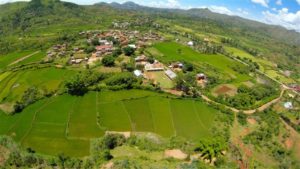
From the parking lot next to the orientation table (at 2,111 m) and the Anosiarivo Arboretum sports enthusiasts can reach the summit of the Tsiafajavona (2,643 m) and its cairn, at the foot of which the locals deposit offerings.
TSINJOARIVO (45 km southeast of Ambatolampy)
In 1840 Ranavalona had a vacation palace built in this splendid place, densely wooded at the time, in a place of prominence dominating the course of the Onive River.
East of the Rova (royal citadel) flows the Onive (150 m) in impetuous waterfalls, the Andriamovoka Waterfalls, down the hill (150 m). Tsinjoarivo, the "thousand points of view", is a sacred place where processions are organized for the Malagasy New Year.
ANTSIRABE "where it is rich in salt" (167 km south of Antananarivo via RN7)
Antsirabe, the coquette, lies at an altitude of 1,550 m in a basin formed by the volcanic cones of 
History of Antsirabe
Antsirabe was just a small village where locals came to stock up on salt when, in the 1870s, Norwegian missionaries, seduced by the freshness of its climate and the healing virtues of its thermal spring, opened the first spa.
Soon equipped by the French with a bathing establishment, a luxurious hotel, a railroad station and a post office, the "Malagasy Vichy" experienced the splendor of colonial resorts in the first half of the 20th century.
The "City of Wonders".
This small museum in Antsirabe was founded by the dean of mining operators in Madagascar. It presents in particular a beautiful collection of minerals from different regions of the island, as well as specimens of rubies, emeralds and sapphires.
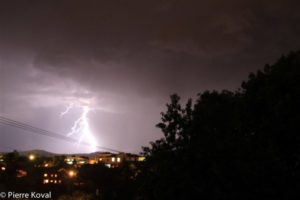
Hikes in Antsirabe
It is a green city with wide avenues where you can walk in a rickshaw, by bike or on horseback and admire its merina houses and colonial mansions with old-fashioned charm.
The city center is arranged around Grande Avenue, an artery that connects the train station with the imposing 
You can test the virtues of Ranovisy's bicarbonate and sodium waters by taking a relaxing dip in the hot thermal pool. Southeast of the lake, on Avenue de l'Indépendance, a market is held daily, while west of the lake, on rue Le Myre-de-Vilers, the Grand Marché d'Asabotsy is in full swing on Saturdays.
The surroundings of Antsirabe
If you follow the road to Belazao for 3 km, you reach the Ivohitra Summit, a viewpoint that dominates the entire region. The Antsirabe basin, which extends west to Betafo, is an important agricultural center.
Wheat, rice and corn are grown here, but above all it is the largest producer of fruits and vegetables in a temperate climate and the largest producer of dairy products on the Big Island. Wine production is also important (4,000 hl/year).
ANDRAIKIBA Lake (7 km west of Antsirabe, via a dirt road at KP6 of RN 34)
This vast body of water, a popular Sunday stroll and swimming spot in colonial times, has reverted to a desolate solitude, but plans are underway to reopen the yacht club.
BETAFO (22 km west of Antsirabe, on the RN34)
This town with a large market is an important rice center. Situated around a crater lake, the Tatamarina, it does not lack its charm with its beautiful pink brick houses with wrought iron balconies, typical of the architecture of the highlands.
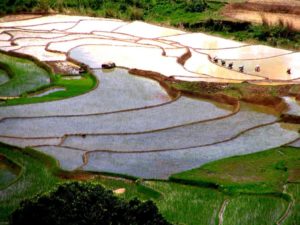
TRITRIVA Lake (17 km southwest of Antsirabe)
An aura of disturbing strangeness hovers over this very deep lake, which lies in a caldera. Its level inexplicably drops in the rainy season and rises again in the dry season.
According to legend, Rabeniomby and Ravolahanta, two 19th century lovers who did not want to unite their parents, plunged into its dark waters.
They turned into the two trees with intertwined branches that can be seen hanging on the side of the crater.
Mount Ibity (30 km south of Antsirabe, via Vinaninkarena, on RN 7).
This mountain, which can be climbed during the day (2,255 m), contains fossil stones and crystals, while the Sahatany Valley on its western flank provides the fine stones that can be bought in the city: Tourmalines, beryls, garnets, amethysts, topaz...
Travel memorabilia, 1865-1870
"The Merinas love to have the ceilings of their main dwellings made of black soot, as they say; the webs that the spiders weave there are laden with soot produced by the fireplace, which is constantly maintained and whose smoke can only escape through the roof gap or through the door ... and the older the house, the more soot there is, the more proud they are of their home, because it is proof that it has been in the family for a long time, that it has been inhabited by a long line of generations, and is therefore all the more respectable, respected and venerated. "
Alfred Grandidier

